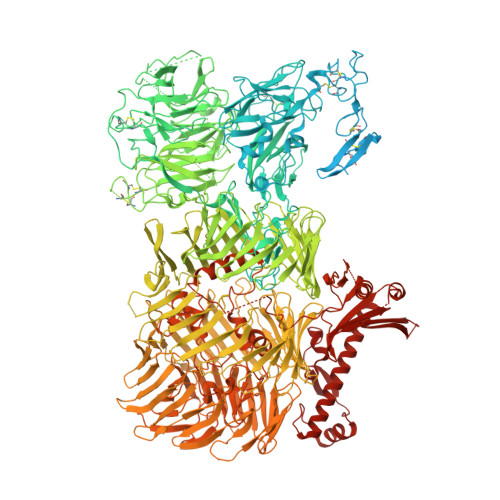Alternative splicing controls teneurin-3 compact dimer formation for neuronal recognition.
Gogou, C., Beugelink, J.W., Frias, C.P., Kresik, L., Jaroszynska, N., Drescher, U., Janssen, B.J.C., Hindges, R., Meijer, D.H.(2024) Nat Commun 15: 3648-3648
- PubMed: 38684645
- DOI: https://doi.org/10.1038/s41467-024-47763-x
- Primary Citation of Related Structures:
8R50, 8R51, 8R54 - PubMed Abstract:
Neuronal network formation is facilitated by recognition between synaptic cell adhesion molecules at the cell surface. Alternative splicing of cell adhesion molecules provides additional specificity in forming neuronal connections. For the teneurin family of cell adhesion molecules, alternative splicing of the EGF-repeats and NHL domain controls synaptic protein-protein interactions. Here we present cryo-EM structures of the compact dimeric ectodomain of two teneurin-3 isoforms that harbour the splice insert in the EGF-repeats. This dimer is stabilised by an EGF8-ABD contact between subunits. Cryo-EM reconstructions of all four splice variants, together with SAXS and negative stain EM, reveal compacted dimers for each, with variant-specific dimeric arrangements. This results in specific trans-cellular interactions, as tested in cell clustering and stripe assays. The compact conformations provide a structural basis for teneurin homo- and heterophilic interactions. Altogether, our findings demonstrate how alternative splicing results in rearrangements of the dimeric subunits, influencing neuronal recognition and likely circuit wiring.
Organizational Affiliation:
Department of Bionanoscience, Kavli Institute of Nanoscience Delft, Delft University of Technology, van der Maasweg 9, Delft, the Netherlands.















